Autographs & History Part I: U.S. Presidents
Marco Tomaschett on Autographs and Their Ties to History
Part of what attracts collectors to autographs is the ability of original handwriting to bring us into contact with a person that interests us. Sometimes that person is someone we admire, sometimes it is someone who horrifies us, and in most cases, it is someone who has exercised power. The power is not always the sort held by political leaders; it might be the power exerted over our imaginations, as in the case of writers, artists, or musicians; or it might the power to inspire us to overcome external obstacles, as in the case of activists, explorers or scientists; or again it might be the inner power of will that is demonstrated by religious leaders, athletes, or those who have shined despite physical disabilities. It is human nature to be interested in people who influence others. Even if one does not accept the traditional view of history as an account of the actions of people who have changed the course of events—and there are many reasons to be cautious about it—it can be empowering to feel close to the people who have wielded power.
If history is not determined by supernatural forces, or fixed by technological or ecological causes, then it makes sense to see human actions as playing a central part in history. Since the appearance of writing over 5,000 years ago, people have been influenced by the symbolic representations of the actions of others. The effectiveness of those symbols has increased dramatically with the introduction of the printing press, radio, television, and computers. Mass media has become so important in today’s world, that it is itself a subject of academic study; there are few areas of society it does not touch. Of course, long before media became an academic discipline, there was awareness of how media could be employed to effect change.
In this two-part series, Marco Tomaschett, our autographs specialist, takes us through a few autographs in our July 30 sale of Fine Books & Manuscripts that touch on these ideas. Below are those by U.S. presidents.
The Kennedys
John F. Kennedy
John F. Kennedy entered the U.S. presidency at a time when television was becoming widespread and politicians were just beginning to understand its power to influence people. The outgoing president, Dwight D. Eisenhower, who had helped achieve Allied victory in World War II, represented to Americans the discipline of the military and the wisdom of experience; Kennedy, in contrast, was educated but relatively inexperienced, and he could not count on the trust enjoyed by those whose achievements were well-known.
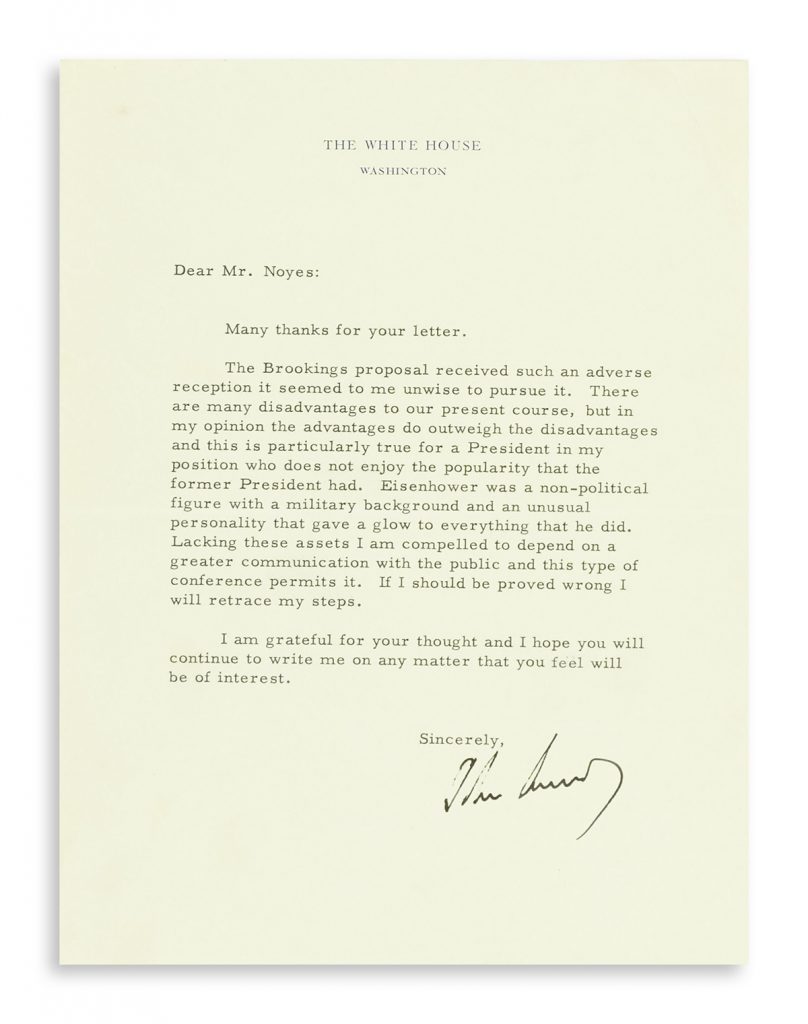
A typed letter signed in 1961 by Kennedy discusses these differences: “There are many disadvantages to our present course, but in my opinion the advantages do outweigh the disadvantages and this is particularly true for a President in my position who does not enjoy the popularity that the former President had. Eisenhower was a non-political figure with a military background and an unusual personality that gave a glow to everything that he did. Lacking these assets I am compelled to depend on a greater communication with the public and this type of conference permits it.” Kennedy had declined the suggestion of his advisors to require reporters to submit their questions in advance of each press conference. Instead, he invited reporters to frequent press conferences where they were permitted to ask what they wanted, knowing that these privileges would incline many to view him favorably. Moreover, Kennedy knew that by deploying his natural charm, he could control the impressions he made during such conferences.
Jacqueline Kennedy
When Jacqueline Kennedy became First Lady, she immediately began to bring her talents to bear upon the problems of governing the United States, even though she held no office. In 1962, Kennedy established the White House Historical Association to design and execute the improvement of the public image of the White House by furnishing it with outstanding examples of artwork and furniture that illustrate the inspiring history of the country. Kennedy recognized that her improvements would enhance the symbolic power of the White House and by extension, the government.
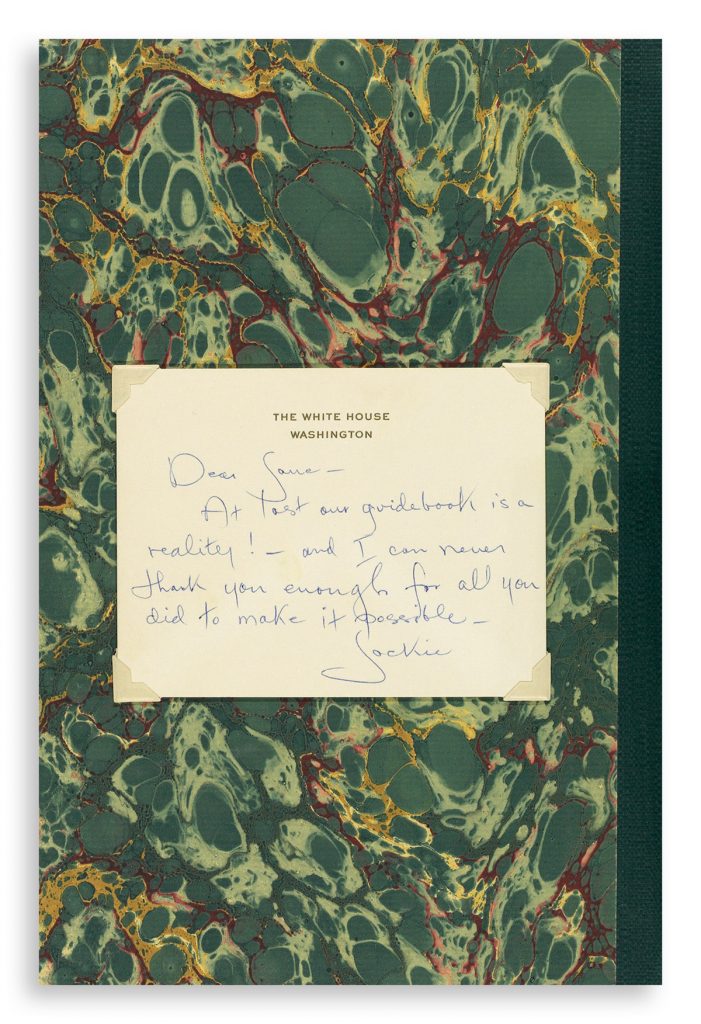
In 1962, the Association published The White House: An Historic Guide—the first book of its kind—to publicize the result of the restoration. A limited edition of this book, inscribed by Kennedy herself, is being offered in the sale; it demonstrates how she and her association helped to make the White House the powerful symbol it is today.
Ted Kennedy
Although the Kennedy family is renowned for being blessed with talents, political and otherwise, they have been repeatedly struck by tragedy, and have not always won the battle to control their image. On the night of July 18, 1969, after attending a party on Martha’s Vineyard held for a group of people who had worked on Robert Kennedy’s presidential campaign, Edward Kennedy drove or skidded off a bridge on Chappaquiddick Island with a young woman passenger, Mary Jo Kopechne, who died in the accident. Because Kennedy did not report the death immediately, and because he—a married man—had been with the young woman that night, a scandal erupted.
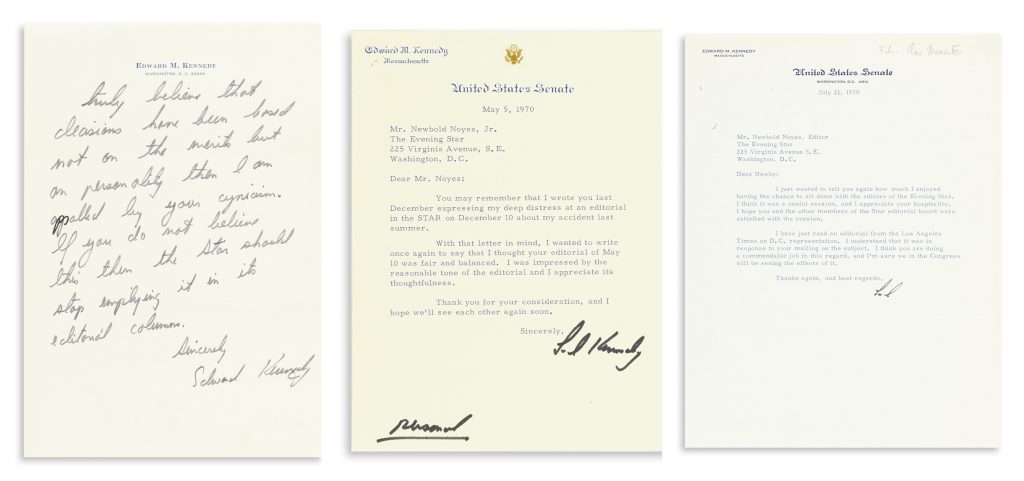
In a small group of letters signed by Ted Kennedy to the editor of the Washington Evening Star, we read Kennedy’s reaction to a 1969 article and related editorial cartoon about court decisions addressing his guilt: “I was personally shocked to see the Evening Star editorial and cartoon of December 11 concerning the legal decision on the petition by Mr & Mrs Joseph Kopechne. The clear implication . . . was that this decision and previous court decisions in this matter deliberately thwarted justice at each step. . . . The editorial . . . implied that . . . court decisions . . . have been influenced by the fact that ‘one of the principals is both rich and powerful.’ This implication is not only an insult to me: it is an insult to the courts . . . .” As a later letter in this group to the same editor shows, Kennedy was satisfied with the newspaper’s subsequent “fair and balanced” coverage of the incident. Despite Kennedy’s efforts, the scandal derailed his presidential ambitions and continued to color his entire career.
Andrew Jackson
Long before the first radio signals were sent, politicians employed media to influence the course of events. In 1834, the U.S. Senate passed a resolution censuring President Andrew Jackson for having ordered the removal of federal deposits from the Second United States Bank, which Jackson hoped would bring an end to its corruption and the unfair advantage it gave to the mercantilist economy of the North. Two years later, in full agreement with Jackson, the Senate voted not only to rescind the censure, but to expunge it from the official record—to prevent the impression of dishonor the censure would make in the eyes of future generations. Using taxpayer funds, Jackson sent copies of the Congressional Globe containing articles and speeches arguing in favor of expungement to Tennessee Governor William Carroll, hoping to persuade him and gain his support.
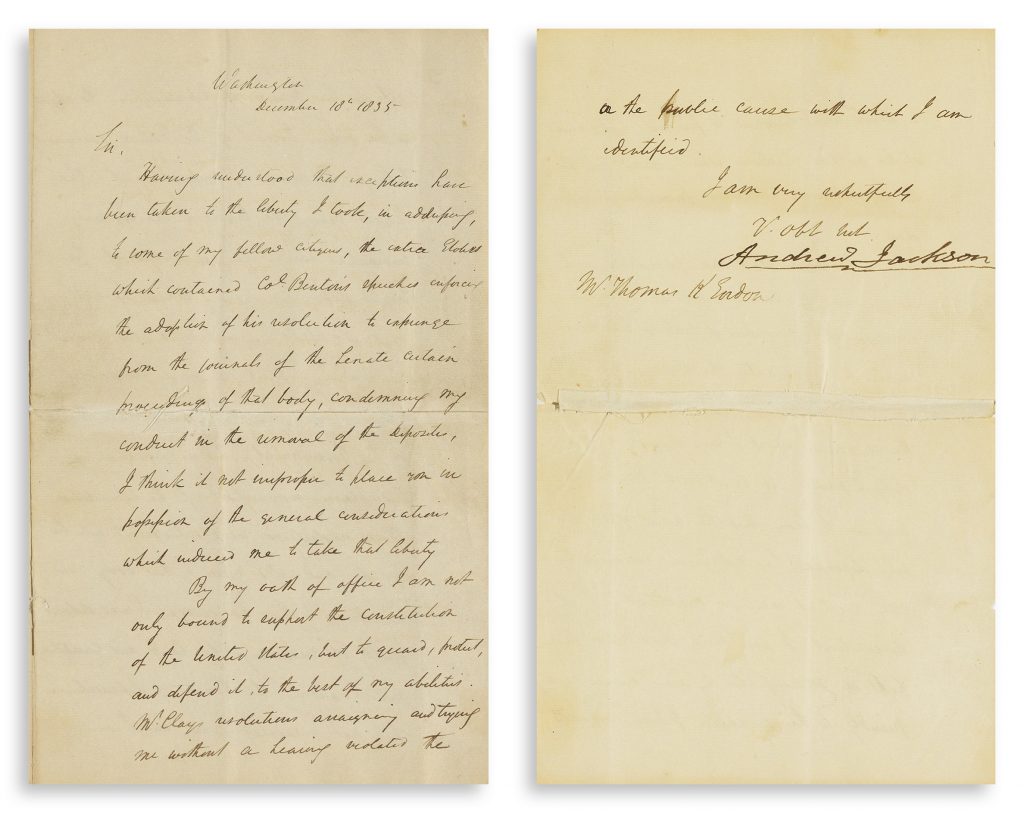
In the sale is a letter signed in 1835 by President Jackson, bitterly comparing the censure to sentencing without trial (because it did not require the more judicial process of impeachment) and arguing that he was justified to use public funds to defend his honor: “I hold myself as clothed legally with the privilege of circulating under my frank any documents or papers which I deem useful to the country . . . .” Although the letter was written as a personal communication, his political friends published it to make Jackson’s defense more effective, as it evidently was, since today, Jackson’s censure is often only discussed in the context of the rarity of presidential censure.
Autographs & History Part II: George Bernard Shaw & Enrico Caruso
Do you have an autograph by a U.S. President we should take a look at?
Learn about how to consign to an auction, and send us a note about your item.
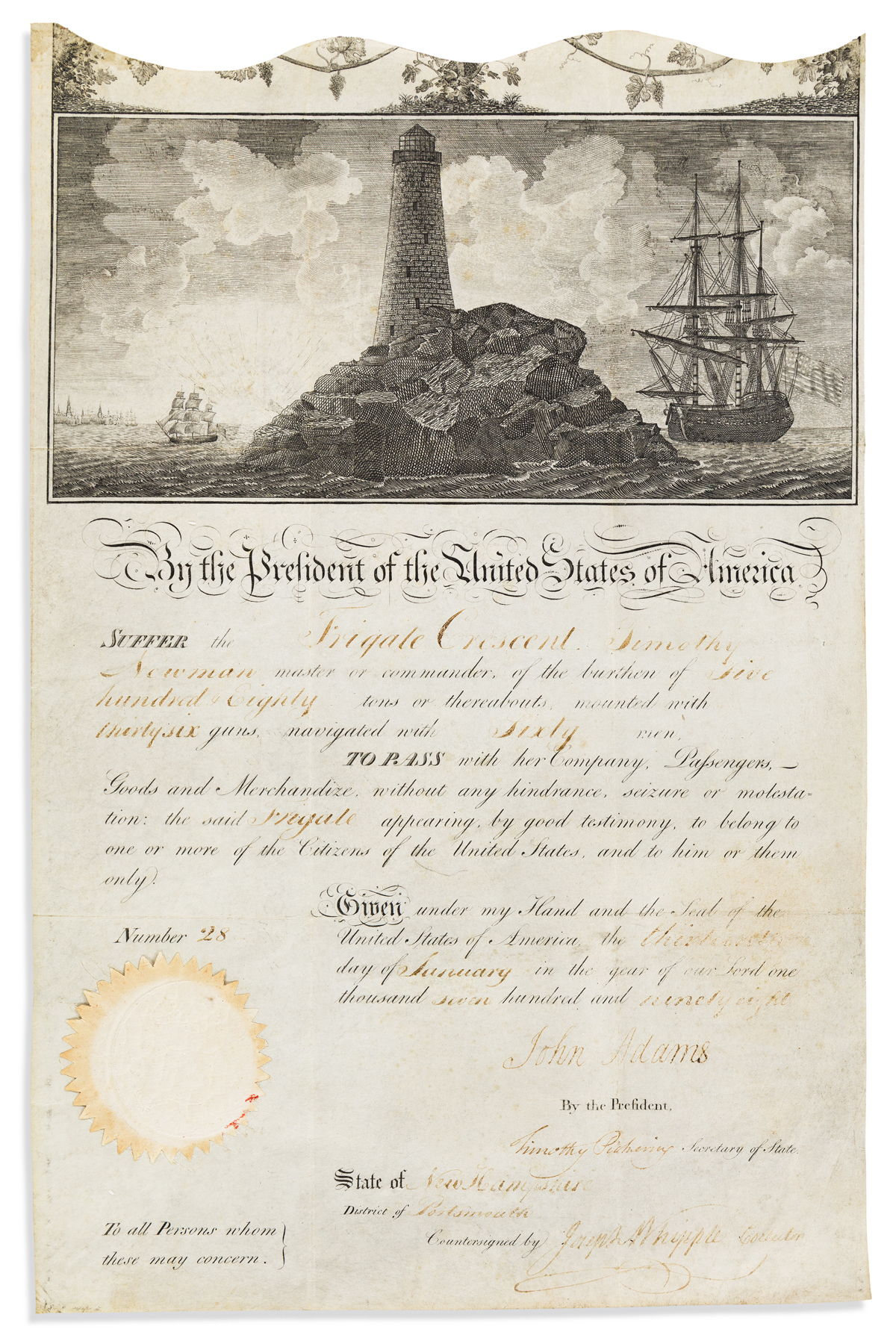
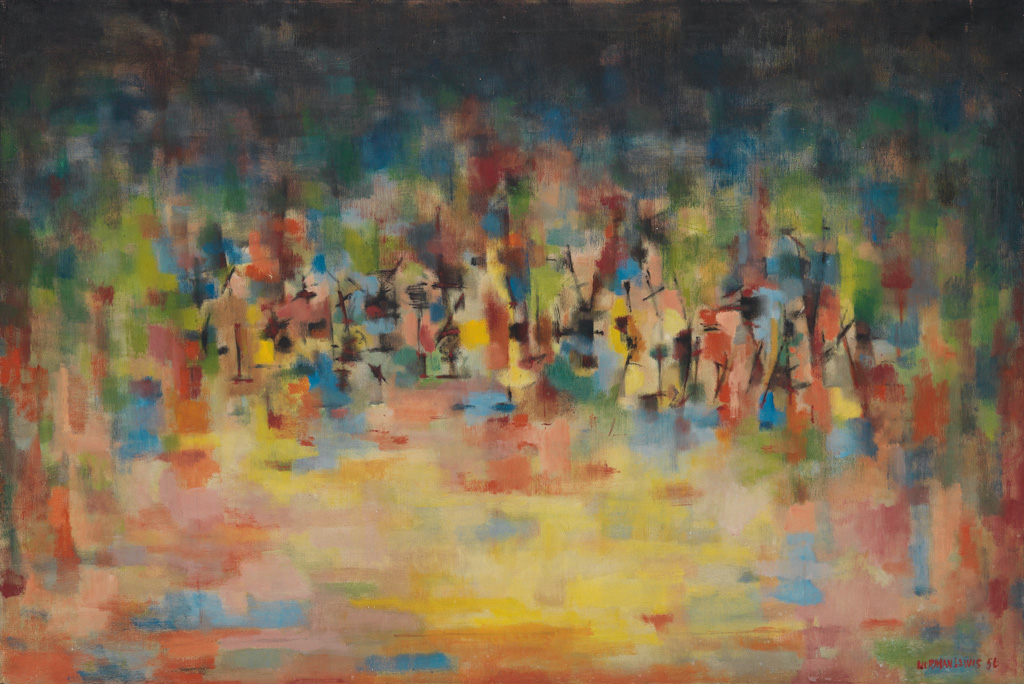
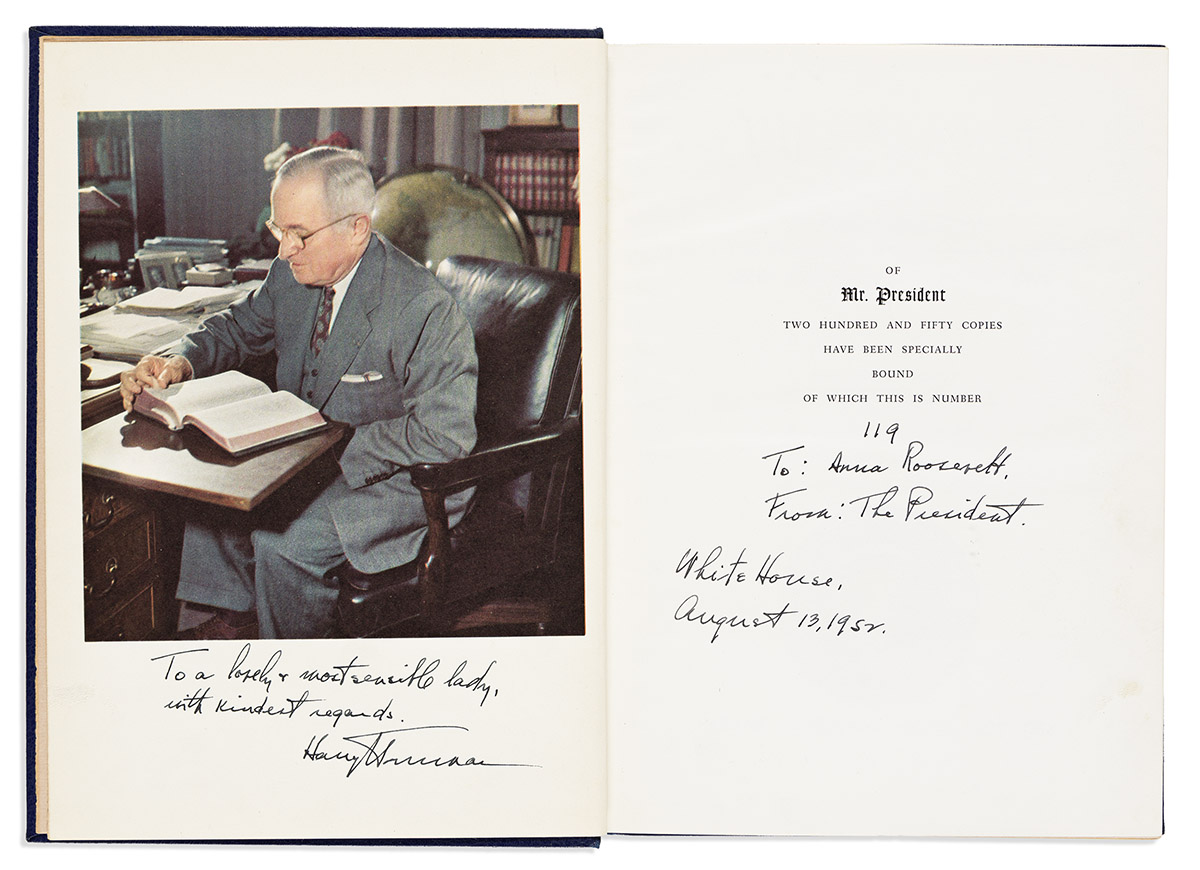





![Grace Meschery-McCormack shares about two copies of Fernando de Rojas’s ‘La Célestine,’ including a limited edition copy illustrated by Pablo Picasso.
At auction April 22. Learn more about the works at the link in our bio.
#Rarebooks #rarebookdealer #antiquarianbooks #auctions
_______________________________________
Music Credit:
Schubert - Piano Quintet in A major ‘The Trout’, D. 667 - IV. Andantino – Allegretto
Music provided by Classical Music Copyright Free on Youtube [https://tinyurl.com/visit-cmcf]
Watch: • Schubert - Piano Quintet in A major ‘...]](https://scontent-iad3-1.cdninstagram.com/v/t51.75761-15/491443494_18499096345036585_5935932878956098058_n.jpg?stp=dst-jpg_e35_tt6&_nc_cat=107&ccb=1-7&_nc_sid=18de74&_nc_ohc=m-4Ir9scQRgQ7kNvwF0EC_d&_nc_oc=Adk6vWHvJMH5TK67zw75jTpjO3KqV6u2qJzpfUwC4bmSaYLGiSmw5xfkUuplusJ5mI8&_nc_zt=23&_nc_ht=scontent-iad3-1.cdninstagram.com&edm=AM6HXa8EAAAA&_nc_gid=I2KwKxFlhuEycrmhTEgvNQ&oh=00_AfF885gvzqO7n4PePM3UjwvTNUF-SksqHVop1Qq0f9v-YA&oe=680BBD91)









